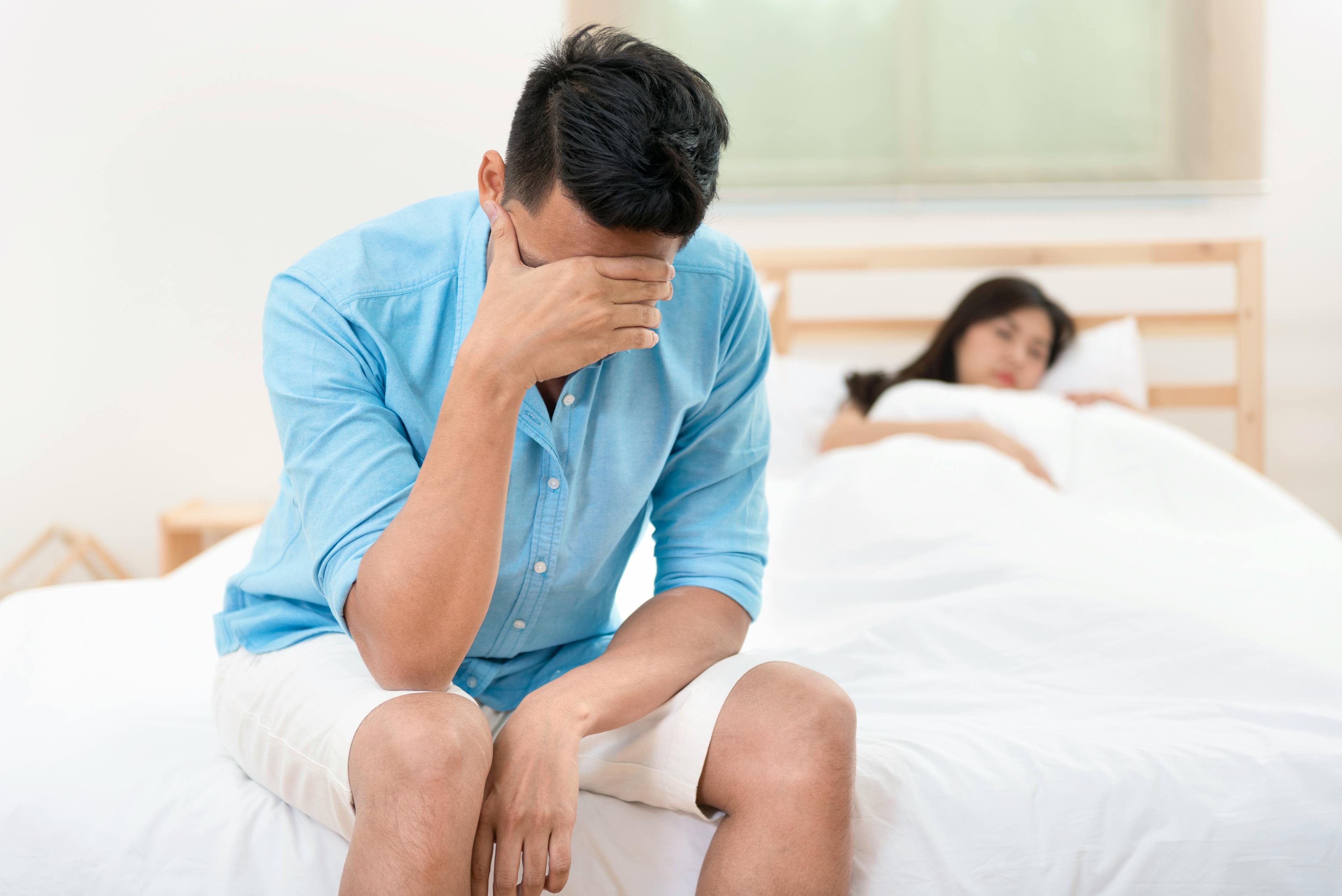Key Takeaways
Low testosterone affects nearly half of men over 45 and may impact energy, mood, strength, and sexual health.
Symptoms of Low T often develop gradually and may include fatigue, depression, reduced sexual function, and changes in body composition.
Symptoms often build gradually, with signs like low energy, depressed mood, reduced libido, and physical changes such as increased body fat.
Treatment options range from hormone therapy to fertility-preserving alternatives and are best explored through a personalized medical evaluation.
Low testosterone (Low T), also known as male hypogonadism, is a common condition that affects an estimated 40% of men over the age of 45 in the United States. It occurs when the body does not produce enough testosterone, a hormone essential for maintaining muscle mass, bone density, mood, energy, and sexual health. Although levels naturally decline with age, many men experience symptoms that benefit from medical evaluation and treatment to restore hormone balance and improve quality of life.
What Is Low Testosterone?
Testosterone is a hormone produced mainly in the testicles. It plays a central role in regulating muscle mass, bone strength, mood, libido, and energy levels. When testosterone production declines below normal levels, the result is low testosterone (Low T), a condition that may cause negative effects on energy levels, muscle strength, mood, sexual function, and bone health.
Normal Testosterone Levels
Testosterone levels are generally considered normal when they fall between 300 and 1,000 ng/dL. As levels naturally decline with age, some symptoms of low testosterone may appear gradually. However, a consistent drop below this range, especially when noticeable symptoms develop, could signal a need for medical attention.
Low Testosterone Symptoms
The symptoms of low testosterone often vary in frequency and severity. Primary symptoms include:
Physical Symptoms
- Fatigue and low energy
- Loss of muscle mass or strength
- Increased body fat
- Decreased bone density
- Slower recovery from injury
Emotional Symptoms
- Depression or irritability
- Difficulty concentrating
- Low motivation
Sexual Symptoms
- Decreased libido
- Difficulty achieving or maintaining an erection
- Erectile dysfunction
- Possible infertility
Causes of Low Testosterone
It is possible for testosterone production to be affected by a variety of physical conditions, lifestyle factors, and underlying health issues.
Medical causes include testicular injury, pituitary gland disorders, type 2 diabetes, obesity, and chronic illnesses such as kidney or liver disease. Certain genetic conditions may also interfere with normal hormone production.
Lifestyle factors such as excessive alcohol use, poor sleep, lack of exercise, and high stress levels may contribute to declining testosterone. Medications like opioids or corticosteroids can also impact hormone balance.
In many cases, a combination of these factors leads to low testosterone, making it important to address both medical and lifestyle influences.
Diagnosis of Low Testosterone
The process of diagnosing low testosterone first starts with a detailed discussion of symptoms and medical history. If signs of Low T are present, a blood test will be performed to measure total testosterone levels. This test is typically done early in the morning when levels are at their highest.
If the results indicate low testosterone, your doctor may recommend further testing to evaluate hormone balance and rule out other health conditions. Additional blood tests or imaging studies may be used to assess the pituitary gland or identify underlying causes.
Treatments for Low Testosterone
Testosterone replacement therapy (TRT) is the standard treatment for Low T. It helps restore testosterone levels, reduce symptoms, and improve overall quality of life. Treatment options include several delivery methods, depending on your individual health needs and preferences.
Bio-Identical Testosterone Pellets
Small bio-identical testosterone pellets are implanted under the skin to provide a steady release of testosterone over several months. This option helps many men maintain more consistent hormone levels without the need for daily or weekly treatments.
Testosterone Injections
Injections of testosterone are administered at regular intervals, either weekly or biweekly, to boost hormone levels. Regular injections help provide flexible dosing and may improve energy, mood, and sexual health.
Topical Testosterone Gel
Applied to the skin daily, testosterone gel absorbs through the skin to raise hormone levels gradually. Care must be taken to avoid skin contact with others after application.
Oral Testosterone Pills
Newly approved oral testosterone formulations are now available. These capsules deliver testosterone through the digestive system and offer a convenient alternative for men who prefer not to use injections, gels, or implants. However, not all men are candidates for oral testosterone, and careful monitoring is needed to ensure safety and efficacy.
Fertility-Preserving Alternatives
Standard TRT can suppress sperm production and often leads to infertility, making it unsuitable for men who are planning to have children. In these cases, human chorionic gonadotropin (HCG) and selective estrogen receptor modulators (SERMs) such as enclomiphene may be used as alternatives. These treatments stimulate the body’s own testosterone production while preserving fertility, and they may be a better option for younger men or those pursuing family planning.
Low testosterone doesn’t just affect energy or mood. It may also impact muscle strength, sexual health, focus, and how you feel day to day. Understanding how these symptoms connect is an important part of finding the right treatment. An evaluation with a provider can help you figure out what’s going on and what to do next.
FAQs
No, it is not always permanent. Some cases of Low T can improve with weight loss, treatment of underlying medical conditions, or lifestyle changes. Other cases may require long-term testosterone therapy to manage symptoms.
Testosterone levels generally begin to decline around age 40, dropping to about 1% per year on average. Some men experience noticeable symptoms in their 40s or 50s, but others may maintain healthy levels well into older age.
Yes. Low testosterone can reduce sperm production and negatively affect fertility. Since testosterone replacement therapy may further lower sperm count, men who wish to have children should discuss alternative treatment options with their doctor.
Absolutely. Chronic stress increases levels of cortisol, a hormone that interferes with testosterone production. Some ways to manage stress is through exercise, relaxation techniques, and quality sleep can help maintain hormonal balance.




